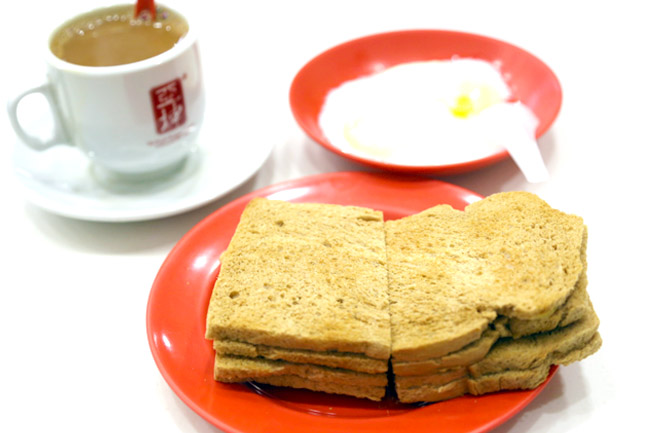
21 Kaya Toast
Kaya Toast, Kopi and Soft-Boiled Eggs have become the quintessential breakfast food for many Singaporeans.
Ya Kun Kaya Toast is probably THE shop that started the entire wave of local kopi toast chains. Founded by Loi Ah Koon in 1944, one of its most original shops is at Far East Square.
After they started franchising in 2000, Ya Kun never looked back.
Many Singaporeans and tourists love their thin, brown crispy grilled bread, spread with homemade kaya comprising of coconut milk, sugar, eggs and fragrant pandan.
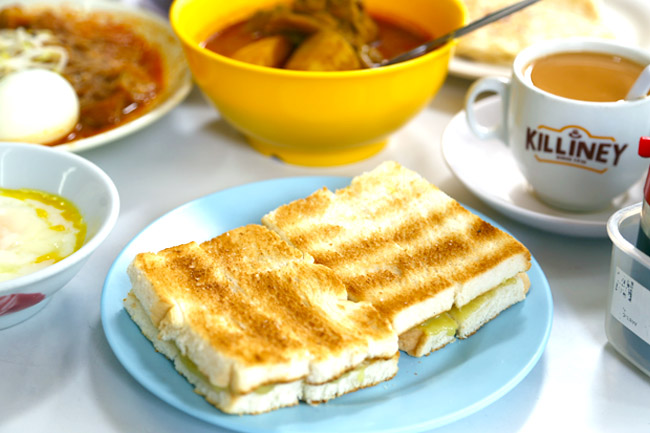
22 Kopi (Nanyang style)
Kopitiam is a common part of Singapore, where a typical drink stall would sell coffee (kopi), tea (teh), milo and other soft drinks, along with breakfast items such as kaya toast and soft-boiled eggs.
This has become our way of life.
There are Killiney Shops around, but I guess the best place to serve Killiney-style kopi is really at Killiney Road itself (a short walk from Somerset MRT).
Our Nanyang-style coffee is indeed a class of its own.

23 Kway Chap
Kway Chap is a two-part Teochew dish consisting of braised pig’s innards, and slippery broad rice noodles.
Blanco Court Food Centre Kwap Chap at Old Airport Food Centre offers sets for or 1 or 2 persons, and you can order an add-on if you like additional ingredients or innards.
The favourite part in the entire plate was the intestines, cut in large bite-size pieces, are spongy tender yet not springy. Interesting to note that the stall does not offer small intestines.
The other highlight was the kway itself, broad yet thin and slippery smooth.
The fragrant soy sauce broth was mildly sweet and herbal, complemented by the aroma of fried shallots.
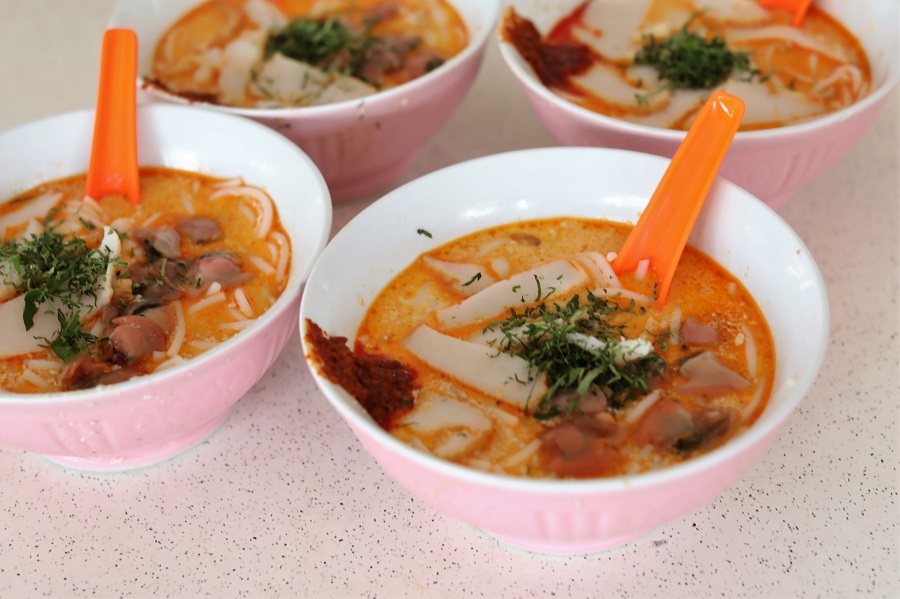
24 Laksa
The spicy coconut milk-based Laksa is probably one of Singapore’s most popular dish among tourists, and many end up buying packs of Prima Deli noodles back home.
Laksa is typically flavoured with coconut milk and dried shrimp, and topped with ingredients like cockles, prawns, fishcake and sprinkling of laksa leaves.
The famous brand is the “Katong Laksa”, though there are several different naming and branches due to family-splits and copycat versions. For the authentic version, you are supposed to eat the Laksa only with a spoon – no chopsticks or fork given.
Sungei Road Laksa is the other famous shop, selling Laksa cooked over charcoal, with deliciously light and coconutty gravy.
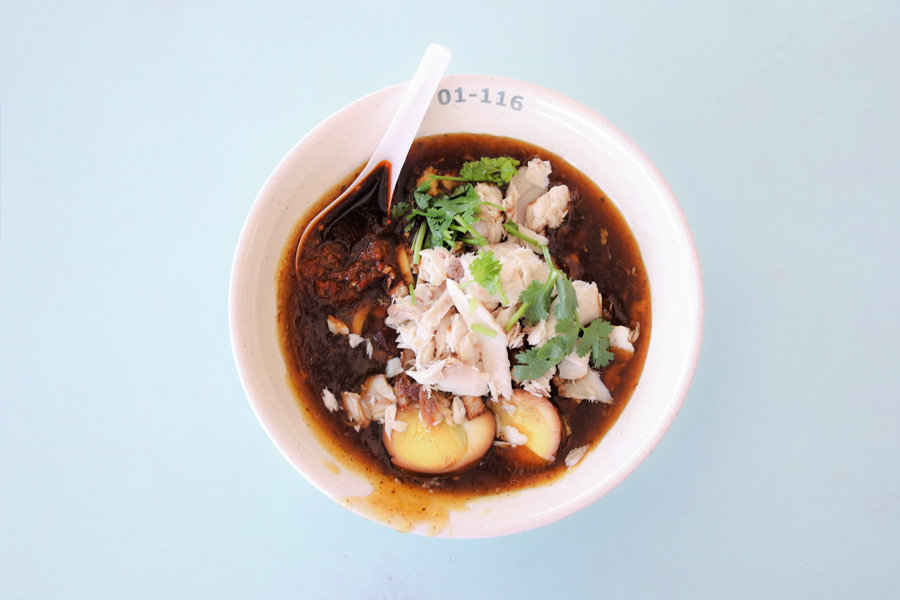
25 Lor Mee
Lor Mee 卤面, the Hokkien-based gooey-gravy hawker food with thick-flat yellow noodles may not be everybody’s kind of dish.
Some say starchy, filling, and somewhat plain. But find a good bowl, and it can be a comforting and satisfying treat.
Xin Mei Xiang Lor Mee at Old Airport Road Food Centre is often lauded for its Lor Mee done right.
The sauce, a key element in a good Lor Mee, was quite unlike any others I had before – thick and flavourful as it was prepared with five-spice and other seasonings.
The balance of being vinegary and spicy was done just right.
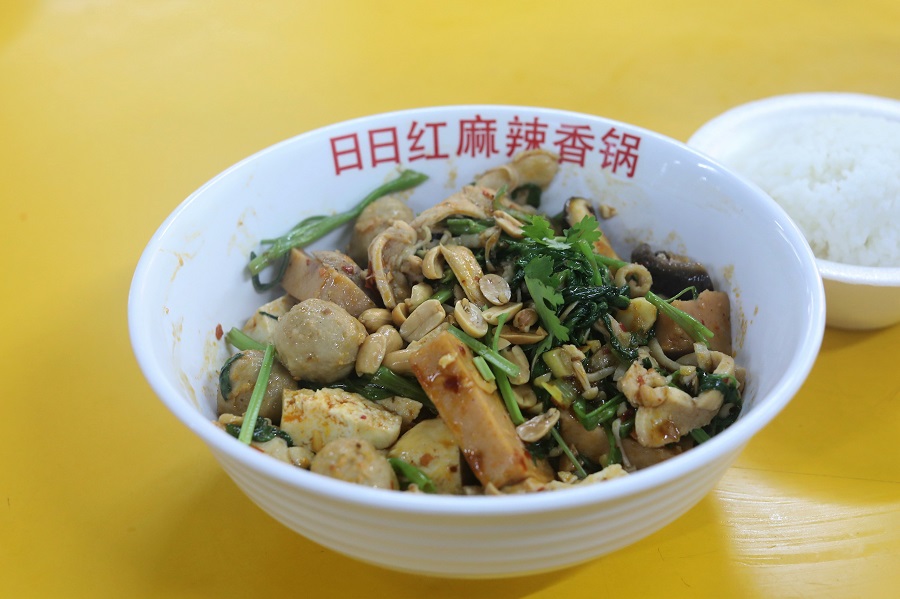
26 Mala Xiang Guo
What? Mala Xiang Guo?
This dish might not have been included a couple of years ago, but now you would spot a Mala Xiang Guo stall in almost every hawker centre, even food courts and coffee shop.
For the uninitiated, the dish consists of a variety of picked ingredients (such as sliced meats, spam, mushroom, vegetables to instant noodles) wok-fried in high heat together with tongue-numbing sauce.
Be careful with picking too much without considering, or it would be a very expensive meal.
Customers can usually pick from ”Xiao La” (little spicy), ”Zhong La” (medium spicy), to ”Da La” (very spicy).
While “Mala” has always been known for its Sichuan and Chong Qing origin, this particular dish did take up in Singapore in quite a big way.
One of the most popular stalls credited for making this famous, is Ri Ri Hong Mala Xiang Guo at People’s Park Food Centre.
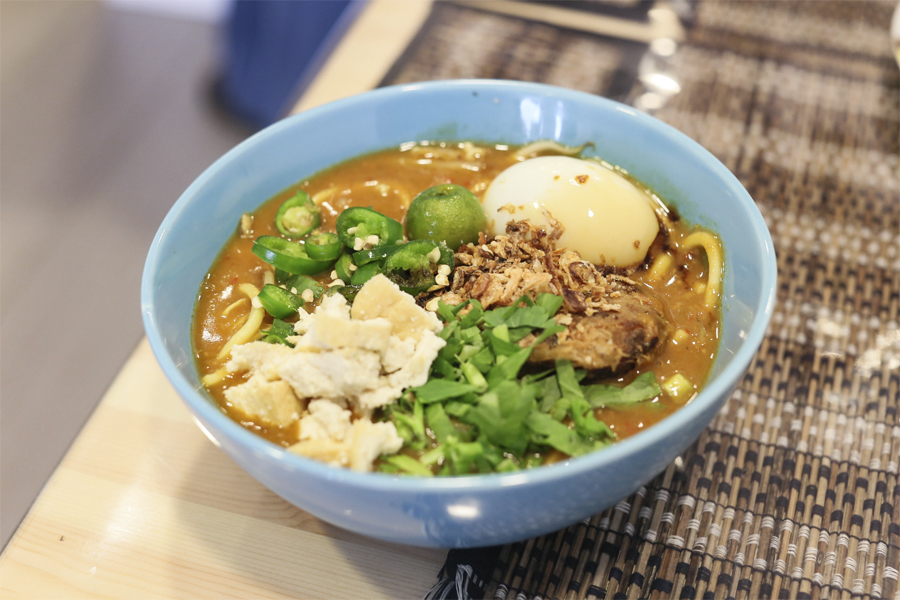
27 Mee Rebus
Mee Rebus typically with yellow noodles in a spicy potato-based gravy, hard-boiled eggs and tau-pok.
Hawker stalls that serve good Mee Rebus include Yunos N Family (Ang Mo Kio Central), Inspirasi (Bedok Interchange), and Rahim Muslim Food (Ang Mo Kio Ave 8).
The Mee Rebus from Lina’s Café (Jalan Pisang) is a must-try, cooked using the “Special Fatimah Ahmah original recipe since the 1970s” (which is from Lina’s mother), priced very affordably for a café setting.
Though it seemed like a simple fare, the Mee Rebus was hearty and tasty, with a mildly sweet and thick gravy, garnished with a hard-boiled egg, spring onions, bean sprouts, and fried shallots.
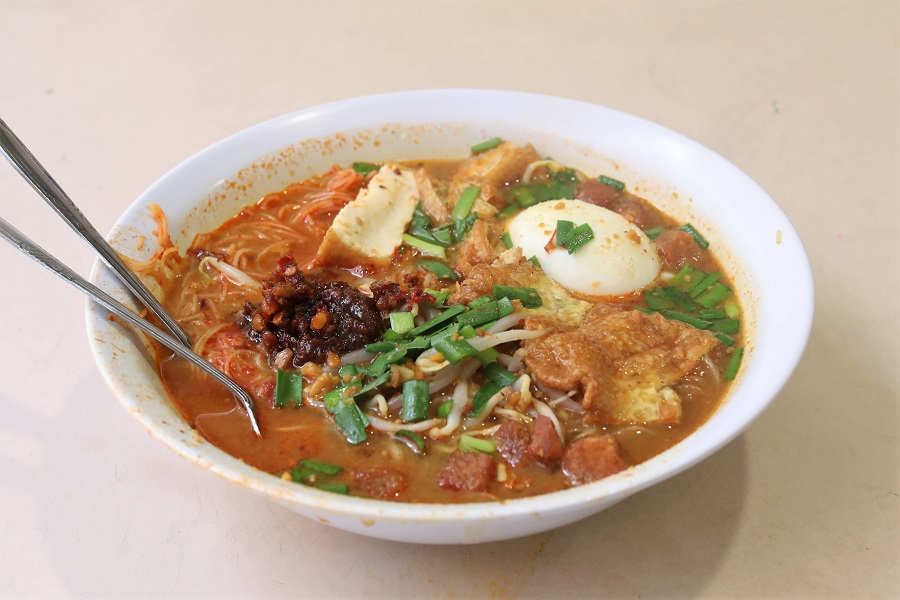
28 Mee Siam
Mee Siam which means “Siamese noodle” in Malay, is a dish of thin rice vermicelli, originating from Southeast Asia and probably adapted from Thai flavours
Jia Xiang Mee Siam at Redhill Food Centre has been serving up Mee Siam for more than 50 years, the owner having learnt the recipe from her mother. Don’t be fooled by the faded signboard, because it is the food that really matters.
You get a myriad of ingredients spread atop the orange bee hoon such as hard boiled eggs, tau pork, tiny fried croutons, a thin piece eggs, fried ikan billis, and finished with a dollop of chilli.
Once you taste the gravy, you know where the magic is – the right proportion of sourness with that zing. Very addictive.
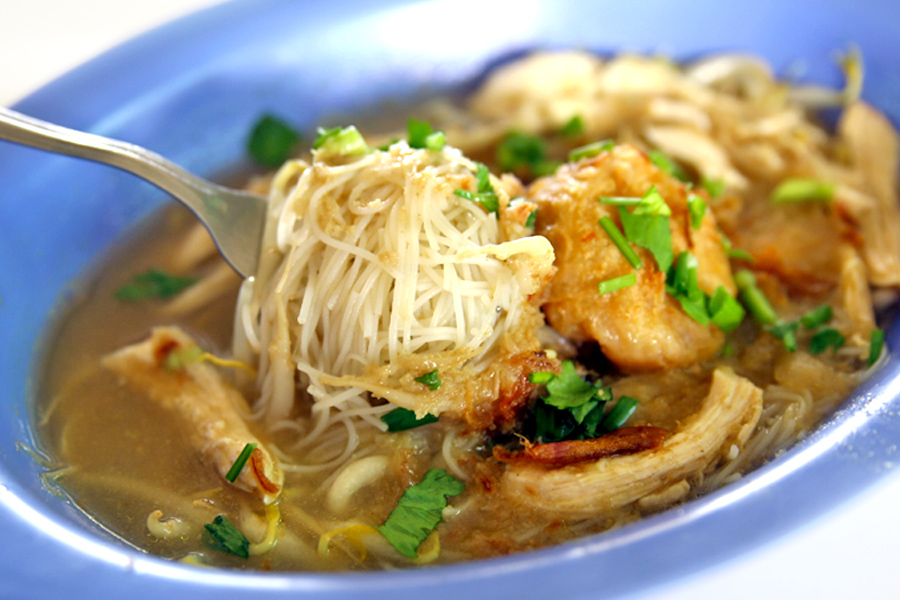
29 Mee Soto
Mee Soto is a spicy Indonesian-style noodle soup dish – “soto” refer to Indonesian soup.
Wedang’s Bee Hoon Soto Ayam, a Javanese-influenced dish of rice vermicelli with a deep fried begedil (potato cake), shredded chicken in yellow spicy chicken stock, was pleasingly tasty.
Its soup base came across as being balanced, cloudy yet not overly rich, spicy but manageable. It is not as salty as some of the Mee Soto I have come across.
You can add some sambal kicap, which is a black sweet-spicy sauce to a portion of the soup to add some kick.
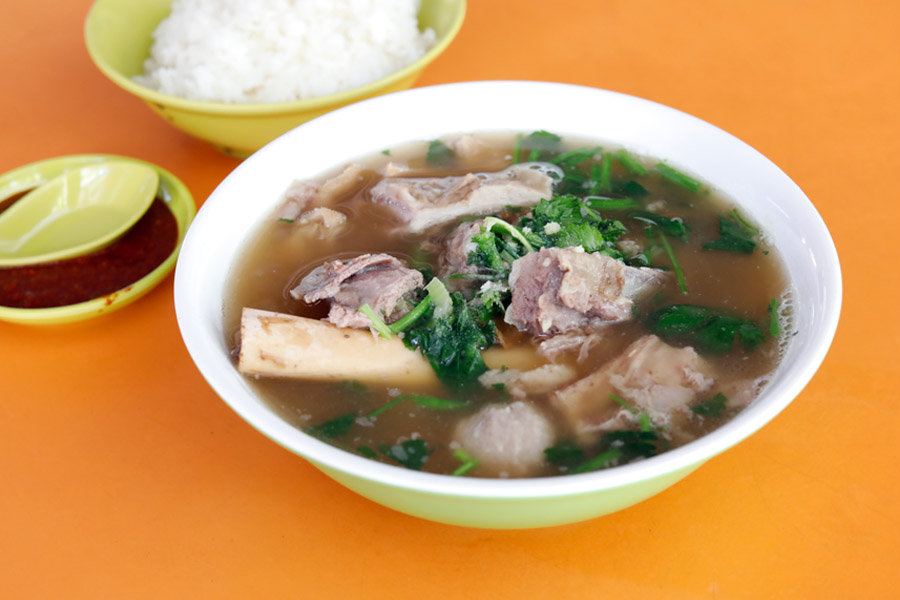
30 Mutton Soup
Do the young even drink Mutton Soup nowadays? But we don’t even see many of such stalls around nowadays.
Mutton Soup seems to be popular food for the older generation, as
Chai Chuan Tou Yang Rou Tang at Bukit Merah View Food Centre attracts a long line of taxi driver uncles and workers during lunch time.
The stalls serves up a variety, from mutton meat, balls, tendon, tripe to even brain, all priced affordable at $5, $6, $7 or $8.
The Mutton Soup came across very pleasant, flavourful with slight aromatic herbal taste that didn’t overpower (compared to some other soups which could be just one-dimensional herbal or peppery)
The meats and parts came across as tender and soft, had slight gamey taste, best savoured with a dip of the tangy chilli (similar to what you get from a beef noodle stall).